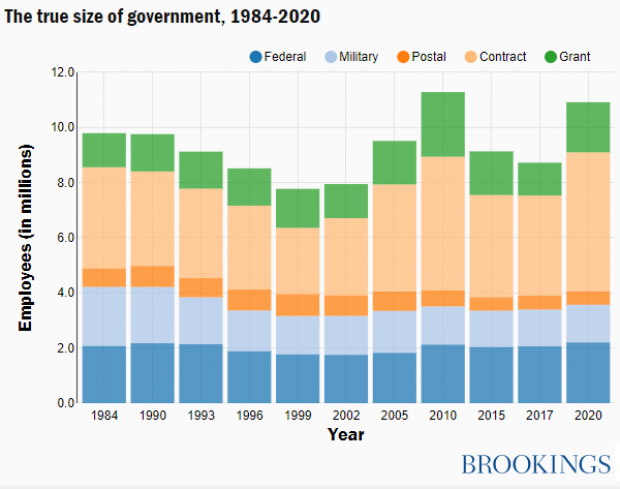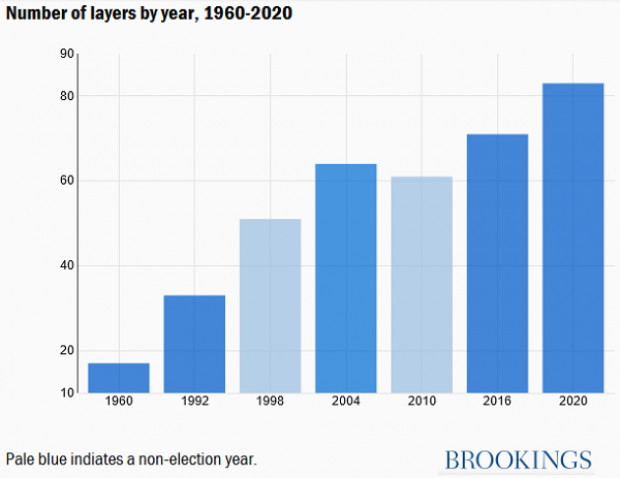Despite rhetoric about shrinking government, the Trump administration has presided over an expansion of total federal employment and record levels of bureaucratic bloat, according to a new study from political scientist Paul C. Light of the Brookings Institution and New York University.
President Trump inherited a “true” federal workforce of about 9 million – the total of all civil servants, postal workers, active duty military, contractors and grantees – and has added about 2 million more positions over the last four years, Light says. About half of that growth has occurred in just three departments – Defense, Transportation and Health and Human Services – and includes a record number of contractors, now totaling roughly 5 million.
President Trump inherited a “true” federal workforce of about 9 million — the total of all civil servants, postal workers, active duty military, contractors and grantees — and has added about 2 million more positions over the last four years, Light says. About half of that growth has occurred in just three departments — Defense, Transportation and Health and Human Services — and the workforce now includes a record number of contractors, totaling roughly 5 million.
New layers of bloat. In addition to the raw numbers, Light also studied the way in which the federal government has added new layers of management over time – the seemingly inevitable bureaucratic expansion that he refers to as “bloat.” Light found that instead of reducing the bloat as promised, the Trump administration has added new layers within the bureaucracy and more leaders within each layer.
“Like branches on a tree, new layers increased the height of government, while new leaders expanded its width,” Light says. “Absent strong oversight and aggressive trimming, this hierarchy grows naturally as Congress creates new positions in the appropriations process, presidents deploy their support staff, civil servants move steadily upward, and new titles such as ‘chief of staff’ become de rigueur."
The high price of bloat. The bloat isn’t just a fiscal issue. It also slows the government down and makes it harder to respond to crises, such as the one the county currently finds itself in. Some sobering examples cited by Light:
“COVID-19 showed just how far Americans must go to find accountability in the federal hierarchy. Healthcare heroes waiting for personal protective equipment faced 18 layers between the top of the Department of Health and Human Services and the PPE at the Strategic National Stockpile. Small businesses waiting for Paycheck Protection support faced 16 layers between the top of the Treasury Department and the Small Business Administration’s program office, and families with loved ones in skilled nursing facilities faced 19 layers between the top of the Department of Health and Human Services and the division of nursing homes at the Centers for Medicare and Medicaid Services.”






